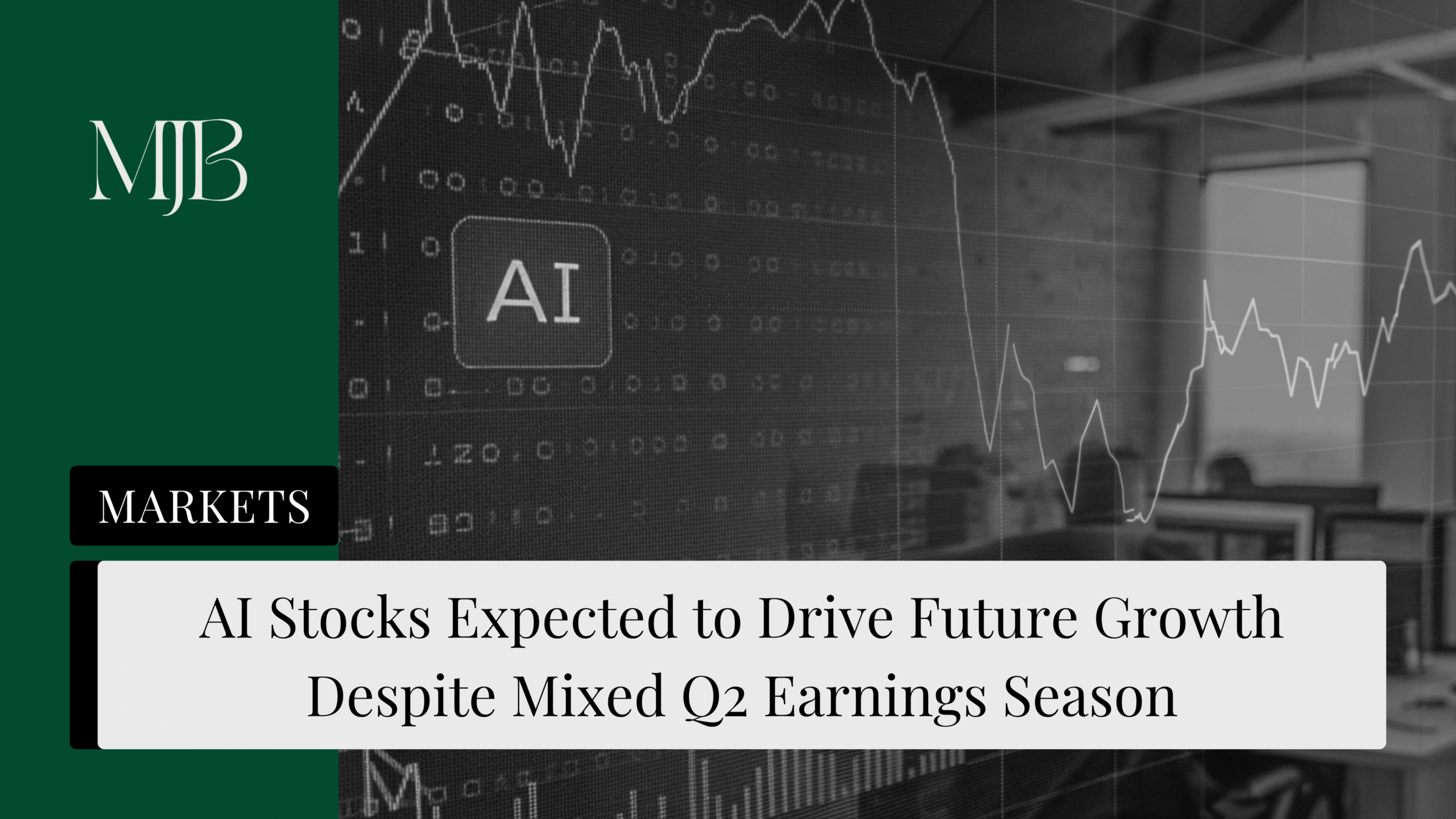The Big Picture: Q2 Earnings Tell a Tale of Two Markets
Here’s the deal: Q2 earnings are coming in like a lukewarm cup of coffee—not terrible, but nothing to write home about either. The S&P 500’s earnings per share (EPS) growth is projected at just 4.8%, marking the slowest pace since Q4 2023.
But before you panic-sell your portfolio, remember this: about 75% of S&P 500 companies typically beat their earnings estimates. It’s like setting the bar low and then casually stepping over it. Major banks like JPMorgan Chase, Citigroup, and Bank of America already proved this point, crushing their Q2 expectations while everyone worried about Trump’s tariff policies.
The real story? AI stocks and tech are carrying the entire market on their backs while other sectors struggle to keep up.
Banks Show Up, But Valuations Are Getting Scary
Financial Sector Delivers the Goods
JPMorgan Chase just dropped a mic with Q2 EPS of $4.96—way above the $4.48 analysts expected. Citigroup and Bank of America followed suit, proving that sometimes the banking sector knows how to surprise us (in a good way, for once).
This pattern isn’t random. Analysts have been downgrading expectations left and right due to trade and tariff concerns, essentially lowering the earnings bar to limbo levels.
Valuation Reality Check
The market’s forward price-to-earnings ratio is sitting pretty at 22-23 times earnings. We haven’t seen valuations this stretched since 2003.
What does this mean? Either investors are betting big on future growth, or we’re in bubble territory. Your guess is as good as mine, but history suggests caution when valuations get this frothy.

Tech and AI Stocks: The Market’s Golden Children
The Growth Champions
While most sectors are playing defense, technology and communication services are scoring touchdowns. Tech is expected to grow earnings by 18% year-over-year, while communication services could hit a whopping 32% growth rate.
Meanwhile, energy and materials sectors are getting absolutely hammered—down 19-25% and 12% respectively.
AI Stocks: The Future is Now
Artificial intelligence stocks aren’t just participating in this growth story—they’re writing it. These companies are positioned to offset weakness in traditional sectors and could be your portfolio’s best friend heading into Q3.
Smart money is building balanced portfolios: combining high-growth AI and tech stocks with defensive, dividend-paying positions. Think of it as wearing both a helmet and a cape—protection with upside potential.

What This Means for Your Money
The Q2 earnings season is painting a clear picture: we’re living in a two-speed economy. Tech and AI are racing ahead while traditional sectors pump the brakes.
For investors, this creates both opportunity and risk. The key is staying diversified while keeping a close eye on tariff policies and consumer spending trends. Don’t put all your eggs in the AI basket, but don’t ignore it either.
The bottom line? This earnings season confirms that innovation drives returns, but at these valuations, even the best companies need to deliver perfection.
FAQ: Q2 Earnings and AI Stocks
Q1: Why are S&P 500 earnings growing so slowly this quarter?
A: Q2 EPS growth of 4.8% reflects ongoing economic headwinds and tariff concerns. However, this is still positive growth, and most companies are beating lowered analyst expectations.
Q2: Are current market valuations too high?
A: Forward P/E ratios of 22-23x are elevated by historical standards, matching levels last seen in 2003. This suggests either strong future growth expectations or potential overvaluation risks.
Q3: Which sectors should investors focus on right now?
A: Technology (18% growth) and communication services (32% growth) are leading earnings growth. AI stocks within tech are particularly well-positioned for continued outperformance.
Q4: How should I position my portfolio given these mixed signals?
A: Consider a balanced approach combining growth assets like AI and tech stocks with defensive, dividend-paying positions. This strategy provides upside exposure whilst managing downside risk.
Q5: What are the biggest risks to watch in Q3?
A: Keep monitoring tariff policy developments, consumer spending trends, and whether tech earnings can justify current valuations. High P/E ratios make the market vulnerable to disappointment.
DISCLAIMER
Effective Date: 15th July 2025
The information provided on this website is for informational and educational purposes only and reflects the personal opinions of the author(s). It is not intended as financial, investment, tax, or legal advice.
We are not certified financial advisers. None of the content on this website constitutes a recommendation to buy, sell, or hold any financial product, asset, or service. You should not rely on any information provided here to make financial decisions.
We strongly recommend that you:
- Conduct your own research and due diligence
- Consult with a qualified financial adviser or professional before making any investment or financial decisions
While we strive to ensure that all information is accurate and up to date, we make no guarantees about the completeness, reliability, or suitability of any content on this site.
By using this website, you acknowledge and agree that we are not responsible for any financial loss, damage, or decisions made based on the content presented.






